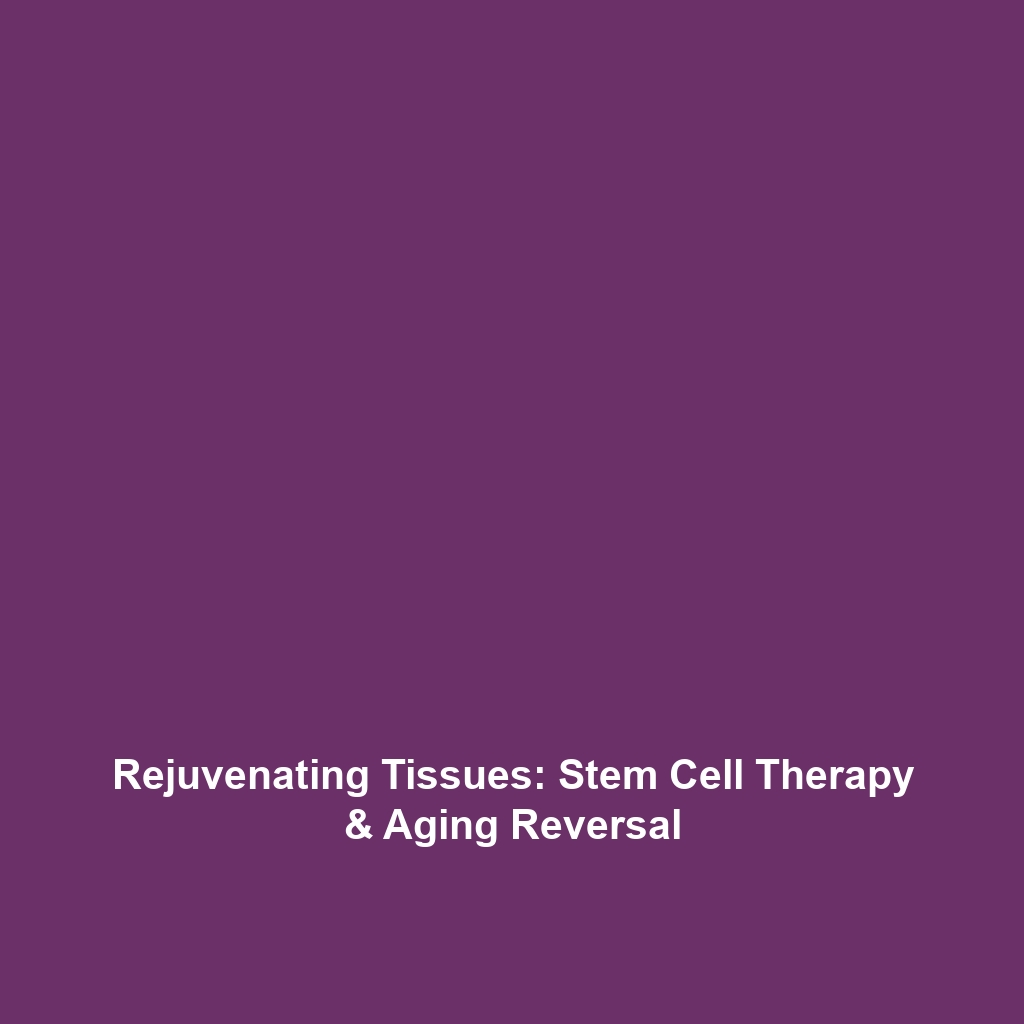Senescence: A Promising Approach for Slowing Aging
Introduction
Understanding and manipulating cellular senescence—where aging cells lose the ability to divide—presents a promising avenue for slowing the aging process. This phenomenon has gained interest within the broader context of Cryonics and Life Extension, as researchers explore innovative strategies to enhance longevity. By inducing a state of senescence, scientists have the potential to mitigate age-related diseases, improve healthspan, and promote overall vitality. This article delves into the significant concepts, applications, challenges, and future research surrounding cellular senescence and its implications for longevity.
Key Concepts of Cellular Senescence
Cellular senescence refers to the process by which cells cease to divide and enter a state of permanent growth arrest, usually as a result of stress or damage. This mechanism significantly affects tissue function and contributes to the aging process. Important principles include:
- Senescence-Associated Secretory Phenotype (SASP): Senescent cells secrete pro-inflammatory cytokines that can affect neighboring cells and tissues.
- Telomere Shortening: Telomeres protect chromosome ends but shorten with each cell division, leading to senescence.
- DNA Damage Response (DDR): Cells respond to DNA damage by entering senescence, preventing the propagation of damaged DNA.
These concepts are pivotal in understanding how senescence intersects with cryonics and life extension strategies aimed at combating aging-related deterioration.
Applications of Senescence in Cryonics & Life Extension
Understanding and manipulating cellular senescence has significant real-world applications in cryonics and life extension. Some key applications include:
- Therapeutic Interventions: Drugs that selectively target and eliminate senescent cells have shown promise in improving healthspan and reducing age-related pathologies.
- Regenerative Medicine: Promoting cellular plasticity in senescent cells could lead to advancements in tissue repair and regeneration.
- Preventive Strategies: Identifying biomarkers of senescence allows for early intervention, potentially extending life expectancy.
Current Challenges in Studying Senescence
Despite the potential of cellular senescence research, several challenges remain:
- Complexity of Senescence: The heterogeneity of senescent cells complicates effective treatments.
- Potential Side Effects: Targeting senescent cells can inadvertently affect healthy cells and induce side effects.
- Regulatory Hurdles: Developing senolytic therapies faces significant regulatory challenges in clinical application.
Future Research and Innovations
Upcoming innovations related to cellular senescence include:
- Gene Editing Technologies: CRISPR and other gene-editing tools could potentially be used to reverse or regulate senescence mechanisms.
- Personalized Medicine: Advances in genomics may lead to tailored therapies based on individual senescence profiles.
- Integrative Approaches: Combining senolytic therapies with traditional anti-aging strategies could yield synergistic effects on longevity.
Conclusion
Cellular senescence offers a compelling framework for understanding and addressing aging, establishing its relevance to cryonics and life extension. By exploring the implications of manipulating senescence, researchers can pave the way towards longer, healthier lives. Efforts to overcome existing challenges and harness future innovations are vital. For further reading, explore our articles on therapeutic interventions and regenerative medicine.

